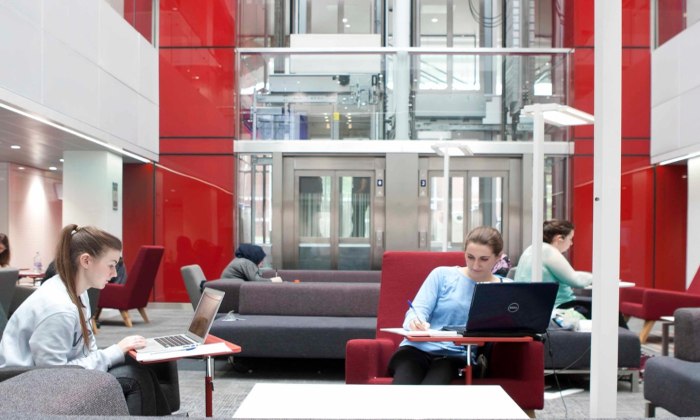Moving to future flexible and blended learning
12 May 2021
Our ‘first steps to flexible learning’ proposal has been approved by Senate, setting our direction of travel for teaching and learning towards a future blended and flexible model

The University’s Our Future strategic vision sets us on a five-year path towards increased student choice and flexible learning through combinations of in-person and online learning. The Flexible Learning Programme has been established to create the right conditions and support structures to allow us to explore new ways of teaching and learning.
Over the past months the Flexible Learning Programme team has met with staff and students from across the University, attending Department, School and Faculty meetings, holding an open meeting and speaking to students to listen to as many views as possible on how we should embed flexible learning. Thank you to the hundreds of colleagues who reviewed and commented on the initial draft of the ‘first steps to flexible learning’ paper – you drew our attention to areas that needed more thought, deepened and clarified our understanding of the aspirations and challenges facing staff and students that come with a move to blended learning and helped us to draft a proposal that strikes a balance between a huge variety of views.
The core proposal is that we make a conscious move to adopt blended learning as our default model of delivery at Programme level, while recognising that the optimal balance of blended learning will differ considerably between disciplines. This includes the mix of synchronous activities, which take place online or on-campus at a specific scheduled moment in time, and asynchronous activities, where students are free to choose a time before a certain deadline that suits them to complete learning activities, such as videos, readings and formative quizzes. This allows academic course unit leaders to lead on defining the appropriate mix of delivery, creating a balanced portfolio across a programme.
Alongside the core proposal, we made supporting recommendations that are summarised below. In the coming months, the Flexible Learning Programme will be working with colleagues across the University to explore how we can best implement these and begin to shift our teaching towards increased flexibility and more agile ways of working:
- Synchronous sessions should primarily be used for active learning, while non-interactive explanatory material should, for the most part, be delivered asynchronously.
- Course unit descriptors should contain a clear study map that explains how students are expected to use the nominal 100 hours per 10 credits.
- Students should be supported to create individual learning schedules that include both synchronous and asynchronous activities, allowing them to develop as independent, self-directed learners.
Based on the themes that emerged in the feedback we received from staff and students, we also included key considerations for a successful shift towards flexible learning. For example, it has become clear that workloads throughout the pandemic have been unsustainable. That’s why we have included that workload/contribution models should reflect the effort required to deliver blended learning and that staff should be supported by appropriate resourcing, including support in creating blended teaching materials and using digital tools. In addition, we have highlighted that accessibility should be embedded in course design from the outset with clear guidance to make provision uniform across the University. Furthermore, our virtual learning environments and digital tools should be reviewed to define the shape of our future 'Digital Learning Environment', which will include digital infrastructure related to teaching and learning, but also tools to access support services, contact academic advisors and build learning communities.
Over the next months, we’ll be asking for your ideas and suggestions to make our next steps a success and create a blended model that really works for staff and students. We’d love colleagues to get involved in network groups on a range of themes we’d like to explore. Look out for the announcements on StaffNet in the coming weeks.
You can also get in touch by email via avp-bl@manchester.ac.uk. All suggestions and comments are welcome and we look forward to hearing from you.
Dan and Steve
Professor Dan George, Associate Vice-President for Blended Learning
Professor Steve Pettifer, University Academic Lead for Digital Learning
